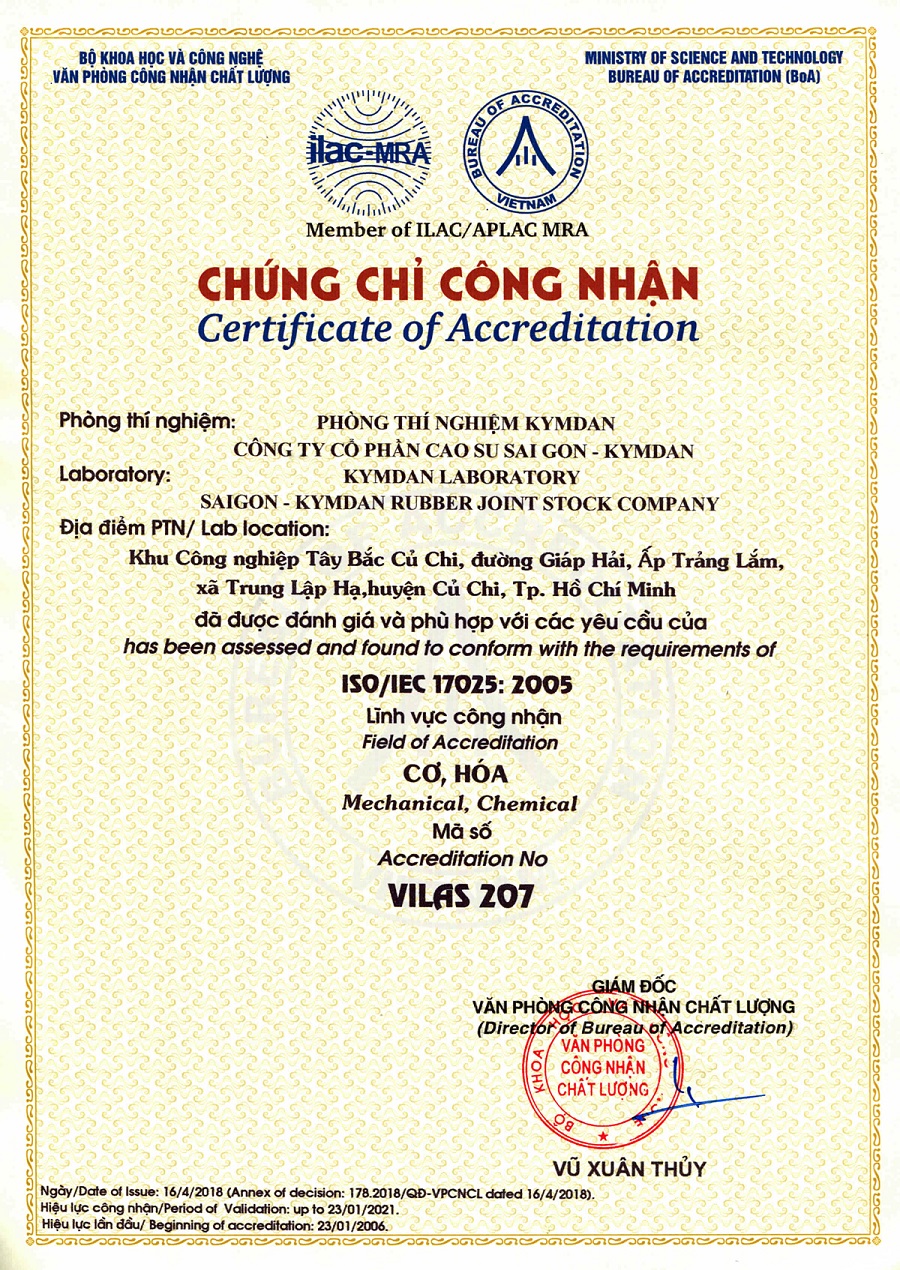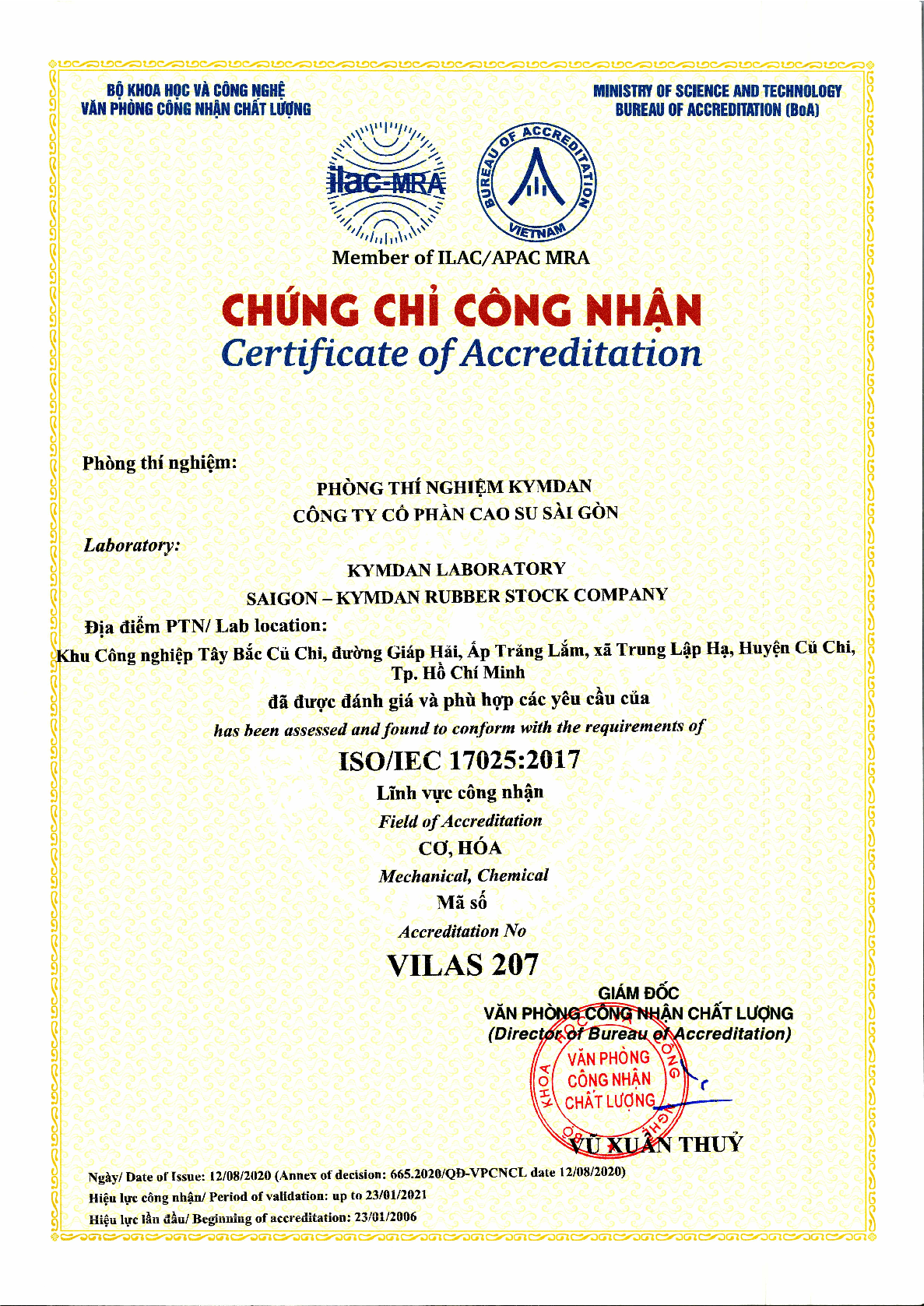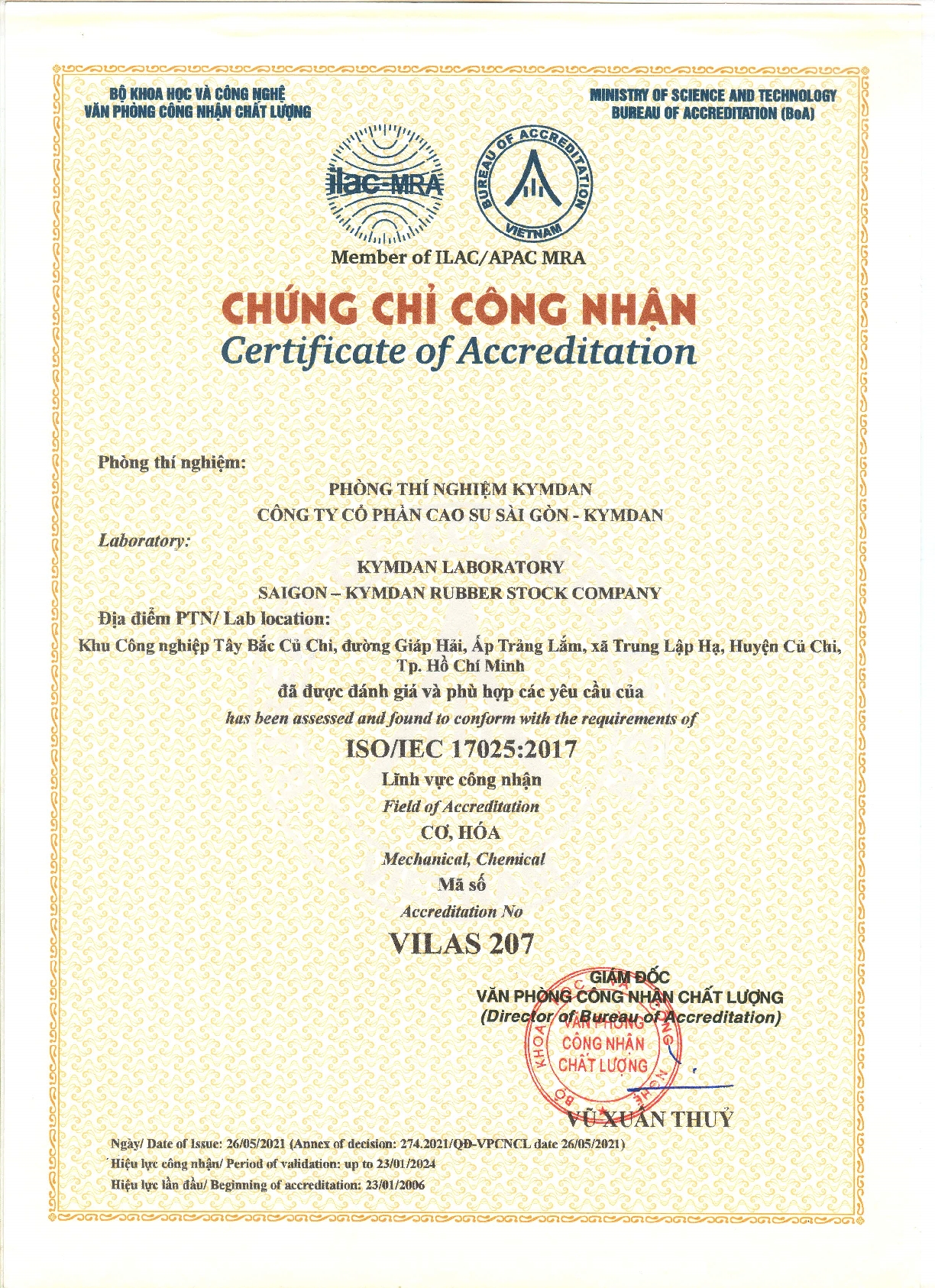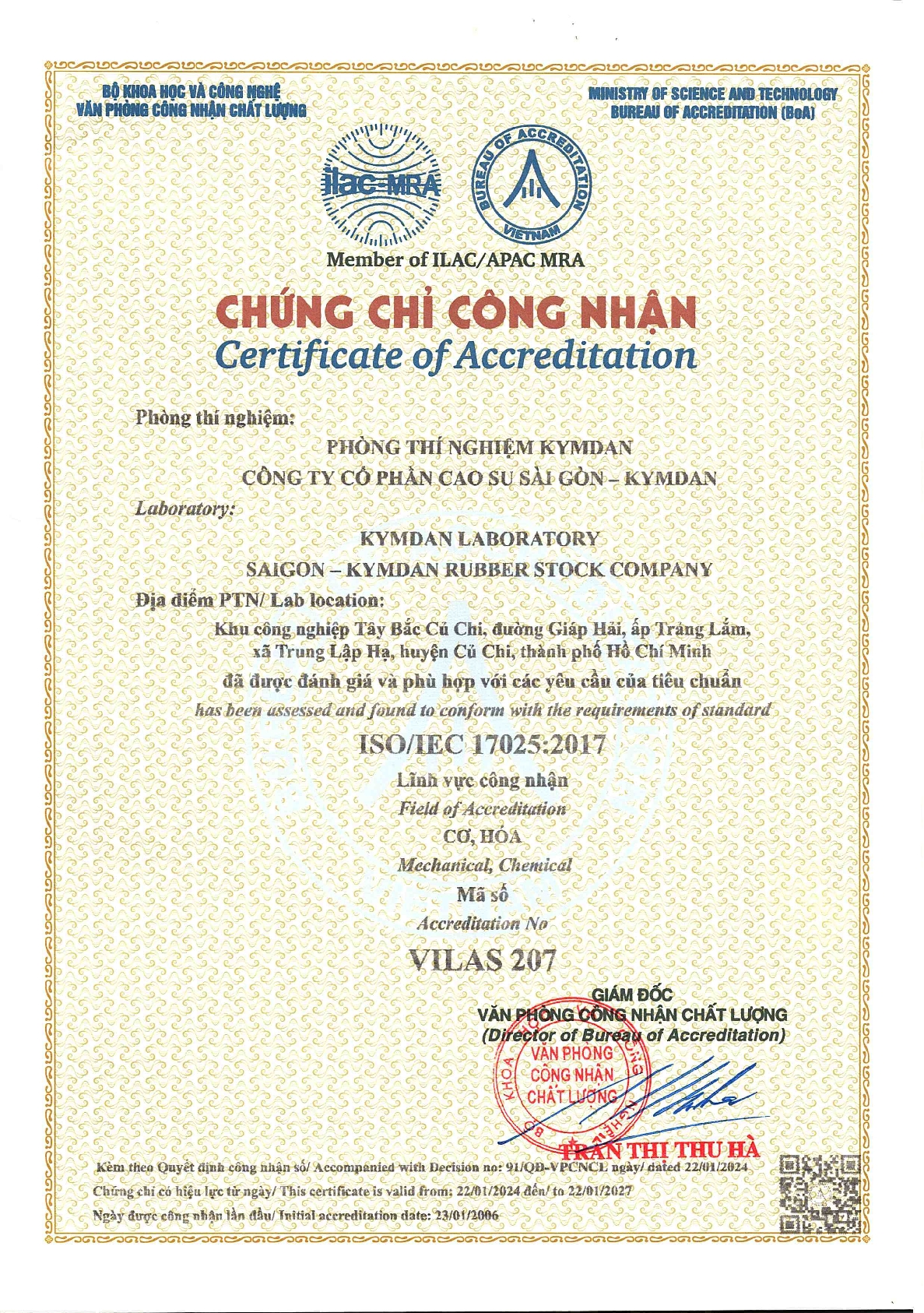Certification of Kymdan Laboratory’s Compliance with International Standard ISO/IEC 17025
A new edition has just been published of an ISO/IEC 17025 standard acknowledged as the international benchmark for approving the competence of the testing and calibration laboratories that play a vital role in trade, in product development and manufacturing, and in protection of the consumer.
Kymdan Laboratory is in conformity with the international standard ISO/IEC 17025: 2005 and ISO/IEC 17025: 2017 and has the code VILAS 207, was firstly certified in 2006 and continuously evaluated every 3 years (on 2009, 2012, 2015, 2018, 2021, 2024) and maintain valid certification until 2027.
Certificate Accreditating Kymdan Laboratory’s compliance with International Standard ISO/IEC 17025: 2017 Granted in 2024 and valid until 22/01/2027
Meaning of the "set of the international norms of ISO/IEC 17025:2005 and ISO/IEC 17025:2017
ISO/IEC 17025:2005, General requirements for the competence of testing and calibration laboratories, replaces the 1999 edition which has been used to "accredit" (approve) some 25 000 laboratories worldwide that test products and samples, and calibrate precision instruments. However, the influence of ISO/IEC 17025 is even greater than this figure suggests since many countries make its use a legal requirement. In addition, documents derived from it are used by laboratories in specific sectors such as medicine and microbiology.
ISO Secretary-General Alan Bryden commented: "ISO/IEC 17025 benefits business, government and society at large. Confidence in the competence of laboratories is frequently needed by businesses when testing new products, or ensuring that finished products are fit for sale, by government regulators and trade officials that require assurance about domestic or imported products before they can be placed on the market, or for ensuring the quality and reliability of testing and analysis relating to environmental, health or safety hazards."
ISO/IEC 17025:2005 contains all of the requirements that testing and calibration laboratories need to meet in order to demonstrate to customers and regulators that they operate a sound management system which puts them in full control of their processes, are technically competent, and are able to generate technically valid results. Accreditation bodies that recognize the competence of testing and calibration laboratories will use the standard as the basis for their accreditation.
"Dependable testing and calibration laboratories are ones that have been duly accredited as competent and ISO/IEC 17025:2005 is the laboratory accreditation standard that, like the edition it replaces, will be counted on by business and governments worldwide," declared Peter van Leemput, who led the ISO group of experts that carried out the work.
The new, 2005 edition results from the amendment of ISO/IEC 17025:1999 to ensure its compatibility with the requirements of ISO 9001:2000, Quality management systems - Requirements. This became necessary because of the generalized adoption of quality management systems conforming to ISO 9001:2000, including many of the organizations that testing and calibration laboratories serve.
It also seeks to clarify that while compatible, the two standards are not inter-changeable. Although both standards can be used by laboratories as a framework for providing their customers with confidence that they are managing their activities, only ISO/IEC 17025 can be used to demonstrate the technical competence specific to laboratories.
Laboratories may choose to be accredited to ISO/IEC 17025, or be certified to ISO 9001:2000, or both, but the processes of accreditation and certification would still be two separate actions, although highly facilitated - both for the laboratories and the assessors - by the consistency now ensured between the two standards.
There are no essential changes to the technical requirements. The modifications relate mainly to the management requirements in the document to reflect the content of ISO 9001:2000, especially in a greater emphasis on the responsibilities of top management, on the need to demonstrate a commitment to continually improve the effectiveness of the management system, on customer satisfaction, and on internal and customer communication about the management system.
Peter van Leemput summed up: "Laboratories that have described and controlled their processes within the laboratory - as already required by the 1999 edition of ISO/IEC 17025 - will only have minor adjustments to make to their existing procedures to ensure that the new orientations in the management requirements are fulfilled."
The International Laboratory Accreditation Cooperation (ILAC) has set a transition period of two years from date of publication of the new edition - 12 May 2005 - for accredited laboratories to comply with the standard's requirements.
From 2021, Kymdan Laboratory continued to receive the certificate of conformity with international standard ISO/IEC 17025:2017, number VILAS 207 in the field of Mechanical and Chemical Engineering.
ISO/IEC 17025:2017 is the current set of standards that has replaced the ISO/IEC 17025:2005 standard, that updates certain changes to the competence requirements for testing and calibration laboratories. Changes are specific to the following 8 segments:
1. Scope; 2. Normative References; 3. Terms and definitions; 4. General requirements; 5. Structural requirements; 6. Resource requirements; 7. Process requirements; 8. Management system requirements.
(Refer to www.iso.org).










